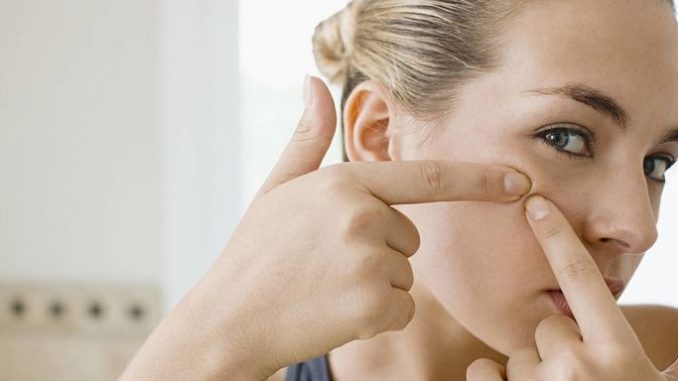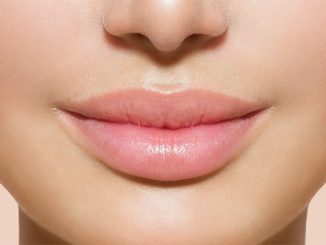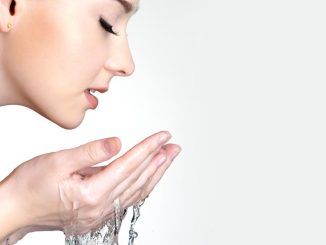
Up until reaching the beginning of 40s, I still experienced having acne on my chin. At 43 now, it seems the chin acne has finally left me or came less than ever. So the article came in through email with a title “25 Facts About Adult Acne” got me reading and pushing me to share it.
I’ve heard some of them, yet the article written by Mark Lees, PhD, an award-winning speaker, clinical skin therapist and product developer specializing in acne, sensitive and aging skin, definitely list the causes of acne more than I have seen.
Below are the 25 facts worth to be known and understood:
1. Genetic predisposition
The predisposition to develop clogged pores and acne lesions is genetic. The inherited genetic tendency—retention hyperkeratosis—is for dead epidermal cells to accumulate inside follicles and clog pores, and the oiliness coating over the cell buildup causing follicular plugging leading to both noninflammatory (open and closed comedones) and inflammatory (papules, pustules, nodules and cysts) acne lesions.
2. Overproduction of oil
During part of the menstrual cycle, the female hormone level in the bloodstream decreases, resulting in an increase in the concentration of male hormone in the blood. Male hormones, known as androgens, are the hormonal switch that turns on sebaceous (oil) glands.
3. Fewer comedones
Adult acne generally has fewer open comedones, is less pustular and severe, but instead is characterized by mild breakouts that occur frequently and constantly.
4. Chin acne
Repeat breakouts on a monthly basis are very likely caused by hormone fluctuations. While science does not have a full explanation for this, these flares of blemishes often occur in the lower half of the woman’s face, specifically in the chin and jawline. These blemishes are often very sore and are in the form of a papule. It is believed that these chin papules are caused by inflammation from sudden surges of sebum in chin and jawline follicles following hormonal fluctuations.
5. Stress
Stress causes hormonal fluctuations, giving explanation to why stress can cause flares of acne lesions.
6. Perioral dermatitis
Perioral dermatitis is an acne-like condition that appears as clusters of papules in the mouth and chin area. Its cause is unknown, but believed to be hormonal since it occurs exclusively in females between 20–55 years of age. Perioral dermatitis does not respond to classic topical acne treatment and needs to be referred to a physician for oral antibiotics.
7. Comedogenic makeup
Heavy or comedogenic skin care and makeup products can contribute significantly to pore-clogging and can increase the frequency of acne lesion flares. Look for products that are lightweight and fluid-like in texture that have been independently tested to ensure that they are noncomedogenic. Avoiding ingredients that are known to be comedogenic is a good idea, but real proof of noncomedogenic status is to have the finish product tested.
8. Exercising with makeup
Exercising while wearing makeup can worsen acne-prone adult skin. Leave the makeup off while exercising and make sure to thoroughly cleanse the skin after exercising.
9. Inflammatory acne
Some skin care and cosmetic products can cause follicular inflammation that will result in sudden flares of acne. Overnight breakouts of several pimples are often caused by products that are highly stimulating, over-exfoliating, have extreme pHs or even by fragrances.
10. Follicular irritation
The skin does not purge itself of toxins. Chronic breakouts after facials are caused by inflammation. This can be triggered by too much extraction, strong masks, too much massage, or stimulating or fragranced products.
11. Jawline
Excess makeup on the jawline is easy to miss and tends to catch residue. Fats left on the skin can contribute to clogging and breakouts. Make sure to remove all traces of makeup and cleanser at and just under the jawline.
12. Acne excoriée
Constant picking at acne lesions—acne excoriée—not only slows healing, but also causes hyperpigmentation and vascular macules—brown and red spots, and leads to scarring.
13. Dairy products and junk food
Certain foods may worsen breakout tendencies in some people.
Following is a list of products, techniques and tips that estheticians can use to help treat clients with adult acne.
14. Daily exfoliating gel
Keeping follicles clear is paramount to achieving clear skin. Daily application of an exfoliating gel serum with glycolic acid or salicylic acid, a combination of the two, or a mild 2. 5% benzoyl peroxide gel helps to flush follicles of dead cell buildup, keeping the canal clear and air flowing to help keep acne bacteria in check. The exfoliating product should be applied lightly to all areas, except the eye area, on a daily basis. Even if the skin has no visible breakout or clogs, using an exfoliating gel will help to flush the follicle canals of debris and microcomedones, which cannot be seen on the skin’s surface.
15. Hydration fluid and sunscreen
Balance any dehydration caused by use of exfoliating gels by regularly applying a tested, noncomedogenic hydration fluid and lightweight sunscreen.
16. Spot treatments
Spot treatment of individual papules with drying lotions can be helpful in speeding their clearance. Products containing sulfur and resorcinol help to dry up the blemishes and reduce swelling.
17. Topical treatment
Most chin acne can be controlled with a topical acne treatment. Chronic acne that repeatedly occurs every month and does not respond to topical acne treatment may have a more serious medical problem causing flares. These clients should be referred to a physician for evaluation and potential hormonal therapy.
18. Prescription care
Dermatological treatment of hormonally flared acne may include prescriptions for anti-androgen birth control pills or spironolactone, which also helps control androgen flares.
19. Noncomedogenic products
Daily-use sunscreen, serums, foundation and even powders need to be noncomedogenic since these products are worn over clog- and acne-prone areas for prolonged periods of time.
20. Water- or silicon-based anti-aging products
Be especially careful when selecting anti-aging products, as these often use fattier bases intended for alipidic, aging skin. Performance ingredients, such as peptides, alpha hydroxy acids and antioxidants are not the culprit here, but the vehicle or spreading agent is the frequent offender. Recommend water- or silicone-based products for aging and remember to look for noncomedogenic testing!
21. Regular cleansing with a foaming cleanser
Controlling oiliness is an important factor in controlling acne. There is a direct correlation between the amount of oil produced by the skin and the severity of an acne condition. The best way to control oiliness is to cleanse the face thoroughly twice a day. A non-fragranced foaming rinseable cleanser will help to remove the excess sebum. In more severe cases, a foaming cleanser that contains benzoyl peroxide may be helpful.
22. Milk emulsion makeup remover
For clients who wear makeup, a thorough cleansing should be performed nightly using a cleansing milk emulsion makeup remover. Rinsable cleansers generally do a less-than-efficient job of makeup removal. After removing makeup with the cleansing milk, the skin may be cleansed a second time with a rinsable foaming cleanser to remove all traces of residue.
23. Deep-cleansing treatments
Deep-cleansing treatments performed at the spa on a regular basis can have a positive effect on clogged pore control. Use of plug-softening desincrustant products and galvanic current, gentle extraction, and a clay- and sulfur-based mask may help.
24. Salicylic acid peels
Mild peeling and exfoliation treatments using salicylic acid may help to keep pores free of excess cell buildup. Salicylic acid is lipophilic, which means it is attracted to fat (oiliness). Mild salicylic peels can be performed regularly and are a great way to start a deep-cleansing treatment.
25. Customized daily regimen
Routine daily home care with the right products is the real key to getting clear and staying clear. It is your job as a skin care professional to find the right program for your client and to educate them on how to properly care for her skin. Make sure to give clear written instructions and to keep the regimen as simple as possible. Treatment compliance on the part of the client can make or break success!
Source: Skin Inc
Hope you will find the 25 facts about acne at adult age listed above useful.
Stay Healthy & Beautiful!
@jennypermanasari



